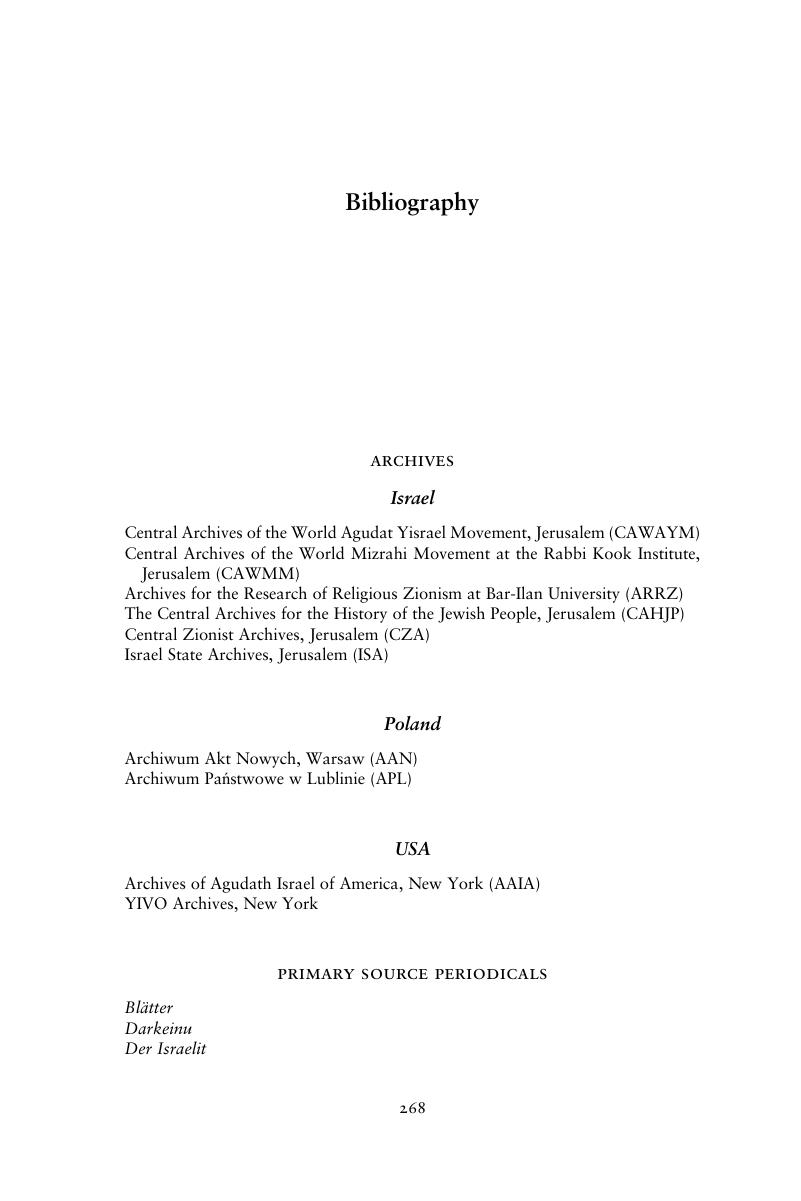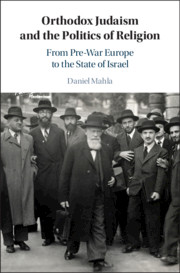Book contents
- Orthodox Judaism and the Politics of Religion
- Orthodox Judaism and the Politics of Religion
- Copyright page
- Dedication
- Contents
- Acknowledgments
- A Note on Terminology
- Introduction
- 1 Of Priests and Prophets
- 2 The Genesis of Orthodox Political Camps
- 3 Interwar Poland
- 4 Divisive Land
- 5 A New Era in Orthodox Relations
- 6 Emerging Israeli Milieus
- Epilogue
- Appendix
- Notes
- Bibliography
- Index
- References
Bibliography
Published online by Cambridge University Press: 06 March 2020
- Orthodox Judaism and the Politics of Religion
- Orthodox Judaism and the Politics of Religion
- Copyright page
- Dedication
- Contents
- Acknowledgments
- A Note on Terminology
- Introduction
- 1 Of Priests and Prophets
- 2 The Genesis of Orthodox Political Camps
- 3 Interwar Poland
- 4 Divisive Land
- 5 A New Era in Orthodox Relations
- 6 Emerging Israeli Milieus
- Epilogue
- Appendix
- Notes
- Bibliography
- Index
- References
Summary

- Type
- Chapter
- Information
- Orthodox Judaism and the Politics of ReligionFrom Prewar Europe to the State of Israel, pp. 268 - 295Publisher: Cambridge University PressPrint publication year: 2020



